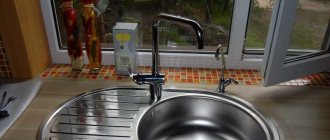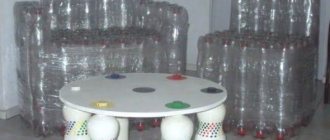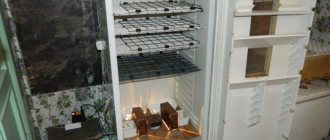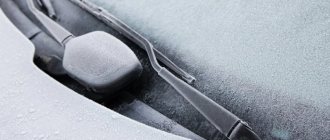Water leakage sensors are a common form of protection against damage to water pipes, unexpected leaks, and everyday troubles associated with a malfunction of the water supply system in an apartment or industrial premises.
- How water leakage sensors work
- The principle of operation of the anti-leakage system
- What is included in leak protection?
- Scope of application of liquid leakage control devices
- Which sensor is better to choose for monitoring water leaks?
- Classification of leakage protection systems
- Types of models by notification method
- Wired and wireless sensors
- Types of sensors, their design and operating principle
- Float devices for monitoring liquid levels in tanks
- Ultrasonic Water Leak Sensor
- Electrode water leak sensor
- Capacitive sensor for monitoring liquid parameters
- Radar water leak detection sensors
- Hydrostatic action sensor
- Rules for installing an anti-flood system
- Ball valve insert
- The best places to install water leak sensors
- Controller installation rules
- Checking the system operation
- How to make a water leakage sensor with your own hands
- Wired homemade sensor
- Wireless homemade sensor of the simplest design
- A more complex circuit with a sensitivity regulator
- Homemade alarms
- General principles for placing leakage sensors
- The most critical points of water breakthrough
- Typical configuration of the protective system
- Electrical safety of water leakage systems
- Review and comparison of popular flood protection devices
- "Stop Flood Rainbow"
- Aquawatch (aquastop)
- Neptune
Competent protection against leaks is available to anyone who is able to install a simple circuit with their own hands to protect against water leaks. It uses parts that are familiar to everyone, even a novice radio amateur or electrician. Low cost, simple circuit and reliability - these are the basic principles of such a homemade device.
How water leakage sensors work
Despite the huge number of devices available for sale, for people who are able to work with simple parts and circuits, a do-it-yourself water leakage sensor is the best way out. Cheap components mounted on a simple principle into a stationary system not only do not make a noticeable gap in the family budget, but also work much more reliably.
Interesting fact . The idea is borrowed from the design of yacht equipment, which allows you to instantly detect a leak in the hold. In it, resourceful inventors cleverly used knowledge from a school physics course - water and air naturally have different electrical conductivities. Leakage can be detected using two electrodes that signal the closure of the electrical circuit.
The principle of operation of the anti-leakage system
Devices that can inform about the presence of water leaks in the system, regardless of their functionality, appearance and method of placement, are built on a general principle. The natural difference in the electrical conductivity of the air and water environments, when liquid from the emergency pipe gets onto one of the installed electrodes, causes an instant closure of the electrical circuit. Next, the action scheme provided by a specific device is launched:
- after an alarm signal arrives at the controller, the solenoid valve located at the input is simply closed;
- the signal is set to sound or light, or both types of alarm are sent at once;
- an automatic device for pumping water starts;
- Water sensors in the apartment are installed in problem areas and allow you to instantly determine the location of the emergency segment.
- the device will take from 2 to 30 seconds to shut off the flow of water, and this time depends on its type;
- if such a device is mounted on a hot water supply system in heating pipes, it cannot block the water flow, but will still signal an accident.
Tip: The number of options available for sale is significant. In order to make a water leakage sensor with your own hands, it is better to choose the simplest scheme: the apartment will be safe, because in a simple device the likelihood of errors during assembly is minimal. If we are talking about a more complex device, it is better to trust professional manufacturers.
What is included in leak protection?
A typical installation may contain a variable number of elements, which is determined by the type of system chosen. A wireless water leak sensor is a must - it monitors liquid loss; you will also need sensors with wires. Some devices are equipped with power sources that ensure that water is turned off in the event of a leak, even if there is no voltage in the electrical network.
Scope of application of liquid leakage control devices
Leakage and seepage of liquid is a common phenomenon from which residents of an apartment with a centralized water supply or a private house with an autonomous water supply system are not insured. Installing a sensor when moving in or replacing pipes during a major renovation will allow you not to worry about an emergency situation, even if the owners of the home are away.
A water leak sensor in an apartment is not the only area of application: it is necessary to monitor the liquid level in engineering systems installed in basements, underground utilities, and in places with access that is difficult for visual inspection. Such a device on water heating pipes will not hurt, even if it simply signals a malfunction. On an industrial scale, using various operating principles, it is possible to control tanks, tank cars, tanks for storing raw materials or finished products, containers of various sizes, and water supply systems located at a considerable distance.
How to choose flood protection
In terms of efficiency, cheap and expensive devices are almost the same, with the exception of manufacturing defects that can be present in any system. Each manufacturer presents its product, but this is just advertising and nothing more.
In the leakage protection system with the Gidrolock , the complete delivery includes 3 sensors, while you can connect another 40 sensors without installing additional units.
Protection complexes Akvastorozh is initially equipped with 4 sensors and you can connect 10 more. If you install additional blocks, the number of sensors can be increased to 375.
Neptune system kit includes only 2 sensors; the rest must be purchased separately. Moreover, without installing additional units, the system can support no more than 10 water leakage sensors.
A wireless sensor system significantly increases the cost of the system, so if you are satisfied with a wired system, it is better to give preference to it. Also, the cost of the system increases if it is possible to install additional taps.
As we found out, for effective operation you need no more than 2 ball valves with solenoid valves mounted on cold and hot water risers behind the inlet valves. If you buy a system with 6-8 taps, you will overpay for something you will never use.
Some manufacturers, when advertising their products, speculate on such a value as operating voltage. And for protection systems it ranges from 5-12 V.
At the same time, the current strength in the sensor wires is absolutely safe, and the current strength in the faucet wires, although it reaches 1 A, lasts only a few seconds, so the difference in operating voltages is not at all significant.
One of the main indicators of system performance is the tap shut-off time. In cheap Neptune , this figure reaches 30 seconds, while the most modern Akvastorozh are capable of turning off taps in just 2-3 seconds.
Please note that if heating or water pipes rupture, 20-25 liters of water can spill out in 30 seconds.
Another important indicator is the presence of a battery included in the kit, which ensures autonomous operation of the system in the event of a power outage.
Which sensor is better to choose for monitoring water leaks?
In this case, expert advice can be found in a variety of ways, but attention should be paid to each of the elements of the scheme. It is better to choose a controller that operates autonomously and is properly protected from external influences, with a minimum response time to danger. There are devices that are able to work with different components of the system and at the same time have backup power. You need to think about how to combine such recommendations with the simplicity and convenience required when installing the device yourself. Don’t buy the first one you come across, but carefully weigh all the parameters. The requirements for cranes are similar - compact, easy to install in the right place, with a suitable wire cross-section and the required length. Sensor – battery-powered or receiving energy from the controller. It is often recommended to buy a wireless water leak sensor - even an amateur can install it in the required location, which cannot be said about sensors with wires.
Radio relay
To supply power to the drive, I purchased this two-channel radio relay from the list of those compatible with the controller on ebay.
Type YKT-02XX-433 The 1527 encoder chip, so beloved by Chinese manufacturers, is installed inside.
It contains 10-amp relays, so, in principle, they can switch almost any household load up to 250V. Limit 2 kW.
To control the electric drive, this is more than enough, since the valve drive is powered by 12 V and, according to the passport, consumes only 4 W, and only when the valve state changes.
This radio relay can operate in several modes, one of which is exactly what we need: mutual blocking of channels. In this mode, when the relay of one channel is turned on, the relay of the other channel is automatically turned off. Thus, we “almost in hardware” protect against the simultaneous supply of voltage to the “opening” and “closing” of the valve electric drive solenoid due to any glitches.
Connection diagram for valve, receiver:
Classification of leakage protection systems
There is no single differentiation that includes all characteristics. Many protective systems have been developed, using different principles, warning systems, with wired and wireless sensors, using ultrasound. Even the body of the water sensor, based on the material of manufacture and reliability, can also become the main selection criterion when drawing up a classification.
Types of models by notification method
The signals can be noise, or they can be duplicated with light (this system is more reliable, especially under modern conditions - listening to music, TV, computer with headphones). The indication may appear on the display of the device that controls the operation of the device. You can even purchase a device that combines sound signals, indicator pulses and sending a message to the home owner on a mobile device, but this requires a GSM transmitter.
Wired and wireless sensors
Wireless water leakage sensors are equipped with a transmitter that can not only detect changes in the electromagnetic field, but also respond to them, providing a signal to the controller. The signal can be modulated differently from different manufacturers, but the principle of operation is common. A wired sensor sends such a signal to the controller via wires. This complicates the installation process, especially if the device is installed independently.
Device classification
- By the number of secondary protective devices at the facility (emergency shut-off valves with electromagnetic drive). Leakage sensors should not shut off all water supplies if shut-off systems are distributed among consumers. Only the line on which a leak is detected is localized.
- According to the method of submitting information about a water supply (heating system) accident. Local alarm assumes that people are present at the site. Remotely transmitted information is organized taking into account the prompt arrival of the owner or repair team. Otherwise, it is useless.
- Notification method: local sound or light alarm (on each sensor), or output of information to a single remote control.
- Protection against false positives. Typically, finely tuned sensors perform more efficiently.
- Mechanical or electrical protection. An example of mechanics is the Aqua Stop system on the supply hoses of washing machines. There is no alarm on such devices, the scope of application is limited. Self-production is impossible.
Types of sensors, their design and operating principle
Water is the most important element of human life support. It is not surprising that many safety and protective systems have been developed, and the principles used vary. Even for use at home or at work, there are also separate models. There are also different ways to obtain energy - power supplies, accumulators, batteries, shapes and types of structures, connection location, number of standard elements, etc.
Float devices for monitoring liquid levels in tanks
Not particularly reliable in apartment conditions. They are much more often used in maritime affairs, on yachts or river fleets, although it is believed that this is a cheap and reliable way of signaling in places where water is constantly added from the central water supply system. However, they control only the upper level of liquid, so in everyday life they are usually used in toilet flush tanks.
Ultrasonic Water Leak Sensor
Sends sound waves of a certain frequency and receives a signal reflected from the walls of the container or the controlled thickness of the liquid. The peculiarity of the work is that the obtained value is constantly compared with the standard value; if discrepancies are detected, other devices that provide protection and transmit messages begin to work.
Electrode water leak sensor
The popularity of electrode devices is quite understandable - they work on the difference in electrical conductivity of water and air. It is enough to place the electrodes at the required distance to obtain a guaranteed signal if the electrode falls from air into liquid. Then everything depends on the reliability of the warning system.
Capacitive sensor for monitoring liquid parameters
Several variable electrodes can be installed for the container, allowing you to control the level of different parameters. Such sensors are good if you need to monitor not only leakage, but also several operating modes.
Radar water leak detection sensors
The operating principle is similar to ultrasonic ones. they also produce periodic signals at a certain periodicity and analyze the reflected vibrations. Even aggressive chemical compounds present in liquid form do not pose any obstacles to the installation of such devices.
Hydrostatic action sensor
Often used on an industrial scale, where constant monitoring of changes in liquid level is required. With the help of such sensors, it is possible to automate the supply of ingredients during the synthesis of chemicals or food preparation. The basis of the hydrostatic sensor is an element that is sensitive to changes in fluid pressure.
What to consider in a flood sensor
It is worth knowing the important aspects when choosing a water leakage sensor. When choosing a protective device, it is necessary to take into account its characteristics:
- Method and place of attachment. The system should be located where there will be no erroneous signals about the occurrence of an emergency if water accidentally gets on the sensors or if there is a high humidity level in the room.
- Power supply. Are there any requirements for the installation of the system when using industrial voltage? It is better to buy devices that run on batteries.
- Sensitivity threshold. You can adjust the sensors for sensitivity or not.
- Manufacturer. When a device is purchased in a store, it comes with a warranty. In case of breakdown, technical assistance is provided.
- Time to close the tap. The lower it is, the less chance of flooding.
- Availability of battery. If wired equipment is installed, provision should be made for the system to operate autonomously when the power supply is turned off.
- Model type. A wireless system costs more.
Water sensors are widely used in household appliances. If connected correctly, the device will last much longer than a homemade circuit. Water flood regulators are in demand among the population, because the low quality of pipe connections and cheap Chinese taps leads to more frequent accidents recently. When the device hits a sensitive water sensor, it raises an alarm in time.
Rules for installing an anti-flood system
May differ when using different types of sensors - for example, wired and wireless. However, the basic rules remain the same - careful marking of points, sequence of arrangement processes, connection for verification after assembly.
Ball valve insert
After the water is turned off and the water meter is removed, the water supply is cut next to the blocked valve. This is the most difficult stage of the installation process and requires special tools and fasteners. Fasteners and tools depend on the diameter of the pipes and the material they are made of - locknuts or split couplings may be required.
The best places to install water leak sensors
The owner of the apartment probably already knows where in the communications system an emergency situation is most likely. The leak locations do not change, even if new plumbing is installed. If this is a new room, then the optimal place would be the transition between pipes or at the lowest point of the room, where the floor is sloped.
Controller installation rules
A zero and a phase must be connected to the device, and in order not to confuse which terminals the wires are connected to, it is better to use the instructions for use from the manufacturer, or number them for the convenience of the worker.
Checking the system operation
After the green signal lights up on the control module, the sensor plate is moistened with liquid from the tap. If all components of the sensor are correctly connected, an alarm will sound, a red light will light up and the water supply will stop. You can return the device to standby mode by removing the water from the plate and rebooting the device.
Typical configuration of the protective system
The following leak alarm systems, operating on the same principle, have gained the most popularity among consumers:
- Neptune;
- Aqua watchman;
- Hydrolock.
The presented systems use ball valves with an electromagnetic or electromechanical valve with a diameter of ½, ¾, 1 inch. The devices not only ensure that the tap is turned off, but also inform about a leak.
Any typical leak alarm system consists of the following standard components: controller - control unit (1), electric ball valve (2), sensors (3) (+)
Water leakage systems can be integrated with Smart Home systems.
The leakage protection package includes:
- Ball valves equipped with an electric drive. They are designed to completely or partially block water supply or heating circuits in case of leakage. The device is mounted directly after the inlet valves.
- Controller , which is a control unit. Designed to perform just one operation - closing the electric tap after receiving and processing a signal from one of the sensors. In addition, the controller is responsible for notifying about leaks and powering the sensors. The controller can be installed in any convenient, yet accessible place.
- Leak sensors . When moisture gets in, a leak signal is given. Connect exclusively to safe energy sources. Sensors are installed in places that most often threaten leaks: under shower stalls and sinks, behind toilets, near washing machines, in places where flexible hoses are connected, etc.
Sensors can be autonomous, as in the Gidrolock , or volatile, as in the cheaper Neptune .
The leak alarm system uses motorized ball valves. The only negative is that such devices are needed for both hot and cold water, because... the system does not respond to the temperature of the flowing liquid
In autonomous water supply systems, the function of an electric faucet can be performed by a pump, which turns off after receiving a signal from the sensor about a leak. But even in this case, it is undesirable to neglect the installation of a ball valve equipped with an electric drive.
Even if the pump turns off and the water supply from the well or well stops, in the absence of a shut-off inlet ball valve, the system will not be fully protected from leakage.
This is due to the fact that water from the hydraulic accumulator may enter the faulty system. Therefore, installing a “controlled crane” is considered a necessity.
How to make a water leakage sensor with your own hands
The assembly principle will differ depending on the model planned for installation. In any case, this is an alarm system that works according to one of three principles - wired, wireless, or more complex, with sensitivity adjustment.
Wired homemade sensor
Can be done using a simple electrical circuit and a signal wire connected to the control unit. The circuit works by closing the contact with water.
Wireless homemade sensor of the simplest design
Wireless works on the same principle, only the signal is supplied by energy coming not through a cable, but from an autonomous reservoir.
A more complex circuit with a sensitivity regulator
It can include several sensors and is used when it is necessary to monitor a larger area. In any case, the components of the design can be purchased separately at a radio store, and the diagram can be drawn up independently or looked at by specialists.
Homemade alarms
They are always much cheaper than factory-made products; it is not necessary to make them powered by electricity - for certain needs you can use float ones, or use someone else’s homemade developments.
Homemade sensor of the simplest design
Despite its primitiveness, the sensor is quite effective. Home craftsmen are attracted by this model due to the cheap cost of radio components and the ability to assemble it literally “on the knee”.
The base element (VT1) is an NPN transistor of the BC515 series (517, 618 and the like). It supplies power to the buzzer (B1). This is the simplest ready-made buzzer with a built-in generator, which can be purchased for pennies, or removed from some old electrical appliance. The power required is about 9 volts (specifically for this circuit). There are options for 3 or 12 volt batteries. In our case, we use a Krona type battery.
How the scheme works
The secret is in the sensitivity of the collector-base transition. As soon as a minimum current begins to flow through it, the emitter opens and power is supplied to the sound element. A squeak is heard. An LED can be connected in parallel, adding visual signaling.
The signal to open the collector junction is given by the very water whose presence needs to be signaled. Electrodes are made from metal that is not subject to corrosion. These could be two pieces of copper wire, which can simply be tinned. Connection points on the diagram: (Electrodes).
You can assemble such a sensor on a breadboard.
Then the device is placed in a plastic box (or a soap dish), with holes made in the bottom. It is advisable that if water gets in, it does not touch the circuit board. If you want aesthetics, the printed circuit board can be etched.
The disadvantage of such a sensor is different sensitivity to different types of water. For example, distillate from a leaking air conditioner may go unnoticed.
Based on the concept: an inexpensive autonomous device, it cannot be integrated into a single security system for your home, even a homemade one.
General principles for placing leakage sensors
Wireless water leak sensors can be placed in the most problematic areas of an apartment or house, since they are not connected to a cable. With wired ones it’s more difficult - in hard-to-reach places you may need a long cable, the signal from which is weaker. For a small room, 1-2 sensors are typically used.
The most critical points of water breakthrough
In the bathroom, toilet, combined bathroom and kitchen, potentially emergency places depend on the method of fastening the pipes and the presence of household appliances. These are mixers, shut-off taps, connection points - couplings, tees, hoses, water meters. In old houses, heating radiators can also become problem areas. How to properly place sensors:
It is correct to place the device in areas of potential leakage, for example, under a sink, bathtub, washing machine or dishwasher. The faster the water gets to the sensor, the faster the shut-off device will operate and the water supply will stop.
Motorized valve
As a valve that shuts off the water, you can use any valve that has an electric drive and an appropriate size connection to the pipe.
I tested my prototype on a Chinese valve with an electric drive for a 1/2-inch pipe.
The valve's motor drive design automatically cuts off power to the coil after opening or closing. Thus, there is no need to use commands from the controller to remove the voltage through the radio relay after the operation has been completed.
Review and comparison of popular flood protection devices
"Stop Flood Rainbow"
An excellent domestic development with an electronic control unit, sensors and electric shut-off valves.
Aquawatch (aquastop)
It is considered a non-analog protective device that is triggered when the inlet hose breaks. Its installation will not interfere with the operation of the washing machine, but will avoid serious troubles if it breaks down. The manufacturer positions it as absolutely three: reliable, autonomous and safe.
Neptune
Automatically shuts off the water when there is a leak, can be controlled via a smartphone, and is sold as a ready-made kit or individual components.
Did you know that there are more than five hundred types of electrode water leakage sensors alone? Some of them are absolutely affordable in cost and will save you from more significant expenses that are inevitable when a pipe breaks, a household appliance breaks down, or a plumbing joint is damaged. All that remains is to make the right choice.
Control
As the “brains” of the system, I used Nanoserver NS1000, a universal controller from the domestic manufacturer 1-M Smart Home.
Controller capabilities that are used in one way or another in this project: • Support for low-cost wireless sensors and radio relays. • Execution of scripts offline (even without the Internet). • Event notification via SMS and email. • Elementary compilation of “scenarios” for the operation of the system without writing code. • Ability to control devices from a smartphone (Android). • Management via WEB. • Keeping “logs”.
How and from what to make a housing for a signaling device
The housing for the alarm should be equally miniature. The most suitable size option is a lid from a liter milk can or from a package of soap bubbles.
The undoubted disadvantage of the device is the fact that the alarm will only help if you are at home. The beeper will not help in your absence. Here we need other means of control that are capable of transmitting a danger signal remotely. It won't be as cheap, but no less effective. The smart home system will help you control everything that happens on your territory, even if you are away. Here is an example of such a system:
Watch this video on YouTube
Think about how much easier your life will be with such devices. A little work and you will protect yourself from unpleasant surprises. What do you think about this? Do you use any devices to avoid leaks? Share your experience with our readers in the comments!
Scope of application of liquid leakage control devices
In everyday life, leakage sensors are installed in rooms where water is present. These are bathrooms, toilet and kitchen. Leaks are also possible in heating systems, so they are installed together with heating devices.
What characterizes the operation of control devices?
- Devices for monitoring the state of hydraulic systems in the apartment consume very little energy in “sleep” mode. In practice, this energy consumption does not exceed 1-3 W.
- At the time of an emergency, actuators consume from 10-12 to 25-30 W. This increase in energy consumption lasts for only the few seconds required to shut off the water or coolant supply to the heating system.
- In industrial production, similar devices are used; an electronic water level sensor will give a signal about a sharp change in indicators.
- Protection will work in a timely manner, which will prevent an accident or other harmful impact on the machines and operating personnel.
- Water level monitoring devices are not only used in production workshops. Reservoirs use devices that will warn of emerging problems - a decrease or increase in level.
Timely notification and stopping the water supply or, conversely, discharging through drainage devices will help prevent a tragedy.
The most critical points of water breakthrough
The most problematic places in the apartment in terms of possible leaks are:
- the floor behind the washing machine (a high probability of leakage is caused by a loose or outdated flexible hose);
- under the kitchen sink (a leak there can be detected too late);
- in the cabinet under the sink (especially if there is something more or less valuable there);
- behind the toilet (can prevent large losses of water from a faulty flush tank).
Sometimes flood detectors are also placed under heating radiators. This rarely makes sense, but it's still worth thinking about.
Homemade alarms
Almost anyone who has ever held a soldering iron in their hands can assemble a simple household electrical sensor that gives a signal when a water leak is detected; in any case, it will be cheaper than buying a finished product.
Note that we specifically emphasized the word “electric”. Before a system based on electromechanical shut-off pipe fittings became available to the general public, our craftsmen made many different mechanical devices with similar functionality.
A spring was used as the main mechanism, and an ordinary piece of paper from a school notebook was used as a leakage sensor. That is, when it got wet, it released the spring, which closed the damper. Below is shown such a mechanism in the cocked state and after operation.
Cocked mechanism
Photo: triggered mechanism
We gave such a device as an example; it makes no sense to assemble it because of its low reliability, bulkiness and, in fact, archaic nature, and installing such a mechanism in a modern apartment will cause a lot of difficulties.
Now there are a lot of simple, more elegant solutions; below is a diagram of one of them.
Electrical diagram: autonomous leakage alarm
The principle by which this audible autonomous protection alarm works is quite simple: as soon as the water closes the contact (sensor), the buzzer (buzzer) is triggered and the LED turns on. The cost of the element base will be significantly cheaper than the price of a finished sensor with similar functionality.
How exactly the sensor will be implemented does not matter; it is desirable that the material used for its manufacture is resistant to corrosion (for example, stainless steel). Due to low power consumption, such a circuit can operate on AA batteries in standby mode for up to 3-4 months, when activated, up to two days (depending on the batteries).
Advantages of this scheme:
- low cost of the element base;
- The size of the assembled sensor is quite miniature, so there are no restrictions on its installation location. In particular, such a sensor can be installed under a bathtub or pipe on which a clamp is installed to ensure that the leak is completely eliminated;
- A correctly assembled sensor does not need adjustment.
How to connect correctly
If the inlet valve has a mortise outlet, then the Aquawatch electric faucet will connect to it directly. If the outlet is threaded, you will need a union nut to connect the two threaded pipes without rotating. Threaded connections are wrapped with FUM tape to provide density and tightness. The direction of the water jet in the plumbing must coincide with that of the arrow on the metal frame of the electric faucet. After this, it is fixed in the wiring with the previously disconnected part of it, meters, filters, and so on are mounted.
In the Aquawatch system, it is important not to confuse the connectors for electric taps on the controller (of course, if there is more than one electric tap). They are designated “Crane 1” and “Crane 2” respectively. The connector markings are also present on the sensors - it is also worth paying attention to. But the system knows where wireless sensors are, and they connect automatically.
At the end of the installation of the wired system, the battery pack is connected to a separate connector on the board and connected to the base of the controller, threading the wires into a special hole. In the Aquawatch wireless system, you also need to combine the radio base with the battery pack and subsequently place them on the controller.
Operating rules
Almost all models of electric ball valves are equipped with a manual switch. This is an emergency device that should only be used when the power is turned off, otherwise the electric drive can easily be damaged.
Important: Firstly, moisture, and secondly, the use of detergents contribute to the oxidation of the contacts of the leakage sensor. The more protected the contacts, the more durable the sensor itself and the entire system that monitors water leakage. In some sets, the contacts are plated with gold specifically to prevent oxidation.
The operation of an electric crane can be simplified by placing the shut-off button, for example, in the vestibule. In this way, it becomes possible to shut off the flow of water if the owners are not at home, and they will not be afraid of any problems with the water supply during periods of long absence.
Some features of popular systems
In order to somehow highlight their protection against water leaks, manufacturers are trying to improve reliability or come up with other moves. It is impossible to systematize these features, but it is better to know about them when choosing.
Capabilities of one block
For different manufacturers, one control unit can control a different number of devices. So it won't hurt to know this.
- One Hydrolock controller can service a large number of wired or wireless sensors (200 and 100 pieces, respectively) and up to 20 ball valves. This is great - at any time you can install additional sensors or install several more cranes, but such a reserve of capacity is not always in demand.
- One Akastorozh controller can service up to 12 wired sensors. To connect wireless, you need to install an additional unit (designed for 8 Aquawatch Radio pieces). To increase the number of wired ones, install another module. This modular expansion is more pragmatic.
- Neptune has control units of different powers. The most inexpensive and simple ones are designed for 2 or 4 taps, for 5 or 10 wired sensors. But they do not check the functionality of the taps and do not have a backup power source.
As you can see, everyone's approach is different. And these are just the leaders. There are even smaller campaigns and Chinese companies (where would we be without them) that either repeat one of the above plans or combine several.
Additional functions
Additional ones are not always unnecessary. For example, for those who are often on the road, the ability to control cranes from a distance is far from superfluous.
- Gidrolok and Akvatorozh have the ability to turn off water remotely. For this purpose, a special button is placed at the front door. Go out for a long time - press and turn off the water. Aquawatch has such a button in two versions: radio and wired. Gidrolok has only wired ones. The Aquastore radio button can be used to determine the “visibility” of the wireless sensor installation location.
- Hydrolock, Akvastorozh and some Neptune variants can send signals to the dispatch service, security and fire alarm systems, and can be built into the “smart home” system.
- Hydrolock and Akvastorozh check the integrity of the wiring to the taps and their position (some systems, not all). In Hydrolock, the position of the locking ball is controlled by an optical sensor. That is, when checking there is no voltage in the tap. The Aqua Watchman has a contact pair, that is, at the time of testing, voltage is present. Protection against water leaks Neptune also monitors the position of the taps using a contact pair.
The hydrolock can be controlled using a GSM module - via SMS (commands to turn on and off). Also, in the form of text messages, signals about accidents and “disappearances” of sensors, broken cables to electric taps and malfunctions can be sent to the phone.
Always being aware of the condition of your home is a useful option.
On the issue of reliability: power supply and other issues
Reliable operation does not only depend on the reliability of the cranes and controllers. Much depends on the power supply, on how long each unit can operate autonomously.
- Aquawatch and Hydrolock have backup power sources. Both systems shut off the water before the backup power supply is completely discharged. Neptune has batteries only for the last two models of controllers, and then the taps do not close when discharged. The rest - earlier and less expensive models - have a 220 V power supply and no protection.
- Neptune's wireless sensors operate at a frequency of 433 kHz. It happens that the control unit “does not see” them through the partitions.
- If the batteries in the Gidroloka wireless sensor run out, the alarm on the controller lights up, but the taps do not close. The signal is generated several weeks before the battery is completely discharged, so there is time to change it. In a similar situation, the Aqua Watchman shuts off the water. By the way, the Hydrolock battery is soldered. So changing it is not so easy.
- Aquawatch has a lifetime warranty on any sensors.
- Neptune has wired sensors that are installed flush with the finishing material.
We looked at all the features of the three most popular manufacturers of water leakage protection systems. In short, the worst thing about the Aquawatch is the plastic gearbox on the drive; the worst thing about the Hydrolock is the high power of the system and, accordingly, the price. Neptune - inexpensive systems are powered by 220 V, do not have a backup power source and do not check the functionality of the taps.
Naturally, there are Chinese leakage protection systems, but you should choose them with caution.











